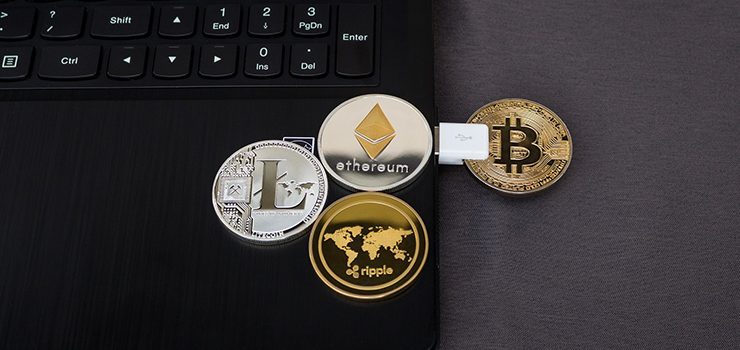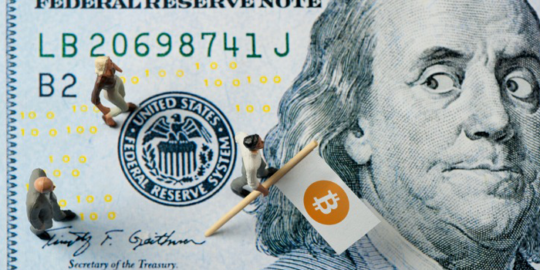In our most recent Tuesday commentary, we gave readers a general rundown on how to buy cryptos… things like why you might use cryptos as a hedge, where to look, and how to buy.
Today, we’ll take a closer look at crypto wallets and “custody,” which simply means storing and securing your cryptos.
As we wrote last week, the concept of holding cryptos can be confusing when put in technical terms. Even some of the most experienced investors find themselves scratching their heads while trying to cut through and decode jargon like “hodl” (that’s not a typo).
Fortunately, crypto custody is something that we can think about in familiar terms: a bank account and PIN.
When you open an account at a bank, you’re automatically assigned an account number and PIN. The account number identifies the account as yours, and you occasionally share this information when transferring money or making payments.
In crypto terms, this is what’s known as a public key. Just like your bank account number, it identifies you as the crypto holder.
This is the first piece of what’s essentially your crypto wallet.
In contrast to your account number, the PIN is a secret code that only you know. (Even the bank doesn’t have access.) You use this number to access the funds in your account, and it acts as a layer of security. In the world of cryptos, this is what’s called a private key.
You cannot transfer your cryptos or make payments without this number. And unlike a PIN, losing your private key means it’s gone forever. There’s no database or customer support to help you recover it.
The very first time you buy cryptos, you’ll be assigned both of these pieces. This process varies depending on how and where you buy. But the important thing to remember is this: Together these keys create the “fabric” of your crypto wallet—the virtual lock and key that safeguards your cryptos.
Now you just need to get from fabric to wallet…
The big three
When people use the term “crypto wallet,” they’re usually talking about one of three things:
- Software in the form of an app, website, or computer program.
- Hardware like a thumb drive or small handheld tablet
- Good old-fashioned paper, with keys either handwritten or as a scannable QR code.
Each of these categories contains more than a few options… so rather than trying to cover that long list in a few short pages, here’s a general breakdown—including pros and cons—for each.
I’ll also include a few resources at the very bottom for readers looking for more info.
Software
Software crypto wallets are just like you’d imagine: an application, website, or computer program secures your IDs. In crypto terms, these wallets fall under what’s known as “hot storage,” or wallets connected to the internet. Some smartphone wallets can be used at physical cash registers, like Apple Pay or Google Pay.
Overall, software wallets are more convenient and easier to securely transport than hardware or paper wallets. And just like Apple or Google Pay, these options are usually free.
Unfortunately, this format comes with the risk of being hacked or compromised like traditional software and banking apps.
In terms of convenience and ease of use, these wallets are often the best place to start.
Pros: Usually free, easy to use, can be used at a cash register
Cons: Always online increases the risk of malware or being hacked
Hardware
Hardware wallets tend to come in two styles: thumb drive or tablet.
Overall, this is the most secure form of crypto wallet since they aren’t usually connected to the internet (aka “cold storage”). And to date, there are no known instances of hardware wallets being hacked or compromised by a virus. They’re really that secure.
In terms of user interface, they don’t offer the same experience as an app. But tablet wallets often come with additional features like transaction history and details.
The main reason this format isn’t as widely used is the price tag. Most hardware wallets start around $100, and can cost hundreds. Compared to a smartphone, that’s a drop in the bucket. But it’s easy to see why many crypto investors choose free software options.
If wallet security is important to you, hardware wallets are the best place to start.
Pros: No internet connect, virus-proof, very secure
Cons: Cost around $100 or more
Paper
This type of crypto wallet usually comes in the form of a scannable QR code. In some instances, it can even be a printout of your public and private keys.
Assuming you don’t lose your piece of paper, these wallets can be very secure. Paper is cold storage, so there’s no risk of compromise via hacking or malware. Further, you’re the only one with a copy unless you choose to make more.
Of course, paper is paper. It’s easy to lose or destroy. And in the end, it’s only as secure as where you hide it. Fortunately, keys written on paper can usually be entered into a software or hardware wallet for better security.
Paper wallets are a good short-term storage solution. But for the long term, hardware or software is a better choice.
Pros: The ultimate hack-proof and virus-proof option
Cons: It’s paper, so it can be easily damaged, stolen, or lost
When it comes down to it, you want to choose the crypto wallet that works best for your level of comfort and security. And depending on where or what you buy, your options may be limited to begin with.
The important thing is to do your research and keep your private key secure. Without that ID, no one can access your cryptos… including you.
Other resources
If you’d like to learn more about crypto wallet options, crypto news site Cointelegraph has a great “Wallets for Beginners” guide that includes links and specific examples of each wallet option. I found it very helpful when doing my own initial research.
After that, there’s Bitcoin.org’s “Choose your Bitcoin wallet” tool. Simply answer a few questions, and the site will recommend options based on your response. And although it has “bitcoin” in the title, it’s a great place to get a feel for which options might best fit your needs.
If you enjoyed this or last week’s commentary—or if there’s a topic you’d like us to cover—let us know here.
Until next time,

| Chris Gaarde Contributing Editor, The Token Tracker |








